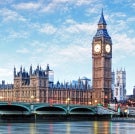Christmas is almost here, and while many of you will have already put up your tree, it’s worth thinking about the environmental impact of this festive staple. Beyond the obvious issues with plastic decorations like baubles and tinsel, we should ask ourselves: is it better to get a real Christmas tree every year? Or should you go artificial instead?
There are a whole host of reasons for choosing one above another – an artificial tree can be reused, while a real tree is more traditional and brings with it a certain charm – but what about environmental concerns? There is a lot to consider, so unless you dig a tree from your garden to replant on Twelfth Night, it might be a surprisingly difficult choice.
The intuitive decision probably sways us towards a real tree. Surely that’s the greener choice? But real trees come with their own environmental concerns. Much of this has to do with carbon sequestering and release.
We all know that trees are great for sequestering carbon, ie storing it away. As soon as a tree is cut down, it begins to release the carbon it has stored up. The amount and rate at which carbon is released depends on the fate of the tree post-use – whether it is destined for landfill, compost or incineration.
Perhaps counterintuitively, in terms of their overall carbon footprint, landfilling the tree could be the better option, particularly when the tree is buried in a manner that limits its ability to release carbon into the atmosphere. Both composting and incineration will lead to a much more rapid release of carbon, while landfilling allows all that carbon to be released at a much slower rate.
However, tree disposal is only one small part of a pantheon of environmental consequences when getting a real Christmas tree. There is also an abundance of climate costs associated with growing, felling and transporting trees.
Of course, the environmental concerns of using artificial trees seem much more apparent at first glance. Fake trees are made up of several different parts and materials, each of which can cause a myriad of environmental problems. It’s all a far cry from the original artificial tree made from dyed goose feathers, wires and dowels (the feathers were dyed green, split and wound around lengths of wires pushed into an upright dowel).
The first trees to resemble the artificial type we’re familiar with today were manufactured by a UK company that specialised in making toilet brushes! The company used a similar manufacturing process to that which they used to make their brushes, taking the same bristles, dying them green, and twisting them in wire. As a metaphor, it feels a little on the nose.
Today there are many more steps to the process, with steel wire and sheeting, PVC, polypropylene and epoxy all combining to make for very realistic festive alternatives. These need to be formed, stamped, pressed, entwined, rolled, cut and fastened together. The whole process takes a huge amount of raw material and energy. Once the tree has been produced it needs to be packed (usually in cardboard), sealed, most likely with polypropylene tape, and shipped. As most manufacturing is now done in China, this shipping is also undeniably environmentally impactful.
So far it does seem that a real tree is far better on balance. However, surprisingly, that might not be the best option if you consider an additional crucial factor. Artificial trees tend to make an annual trip to and from the loft and get reused many times. The American Christmas Tree Association (yes, there really is such a thing!) have looked into this. They say that, on average, artificial trees are used for 10 years. That isn’t unreasonable, considering the time span they are in actual use each year – they don’t tend to experience much wear and tear, being up for only a few days in December.
That element or reuse makes artificial trees the clear winner in terms of environmental impact. In fact, another study by ACTA suggested that reusing a tree across five years would have a lower environmental impact than buying five real trees during that same period.
Other reports put this reuse figure closer to the 10-year mark before that tipping point comes into play, but it really does depend on so many input variables, not least how locally the real tree grows, the fuel used by transport vehicles, fertiliser and pesticide usage, how it was harvested and what happens post-use. Likewise, many variables need to be accounted for with the artificial tree, including raw materials processed, and emissions generated during processing and transportation.
A tree is only used for a relatively small portion of the year, so even one purchased from a moderately priced retailer ought to last for many years. The more trips it takes from the loft, the more environmentally friendly it becomes.
So that’s the tree sorted – the tinsel and baubles, of course, are another environmental story altogether!
Dr Alicia Chrysostomou is a senior lecturer at London Metropolitan University, and the author of the new book ‘Plastics: Just a Load of Rubbish?’
Credit: Source link




